Mouse to Rat#
Mus musculus to Rattus norvegicus
Input files#
To run this example, you will need to download the following three input files:
- Input
target Genome \(T\) in FASTA : mRatBN7.2_genomic.fna
reference Genome \(R\) in FASTA : GRCm39_genomic.fna
reference Annotation \(R_A\) in GFF3 : GRCm39_genomic.gff
There is only one command you need to run LiftOn:
lifton -g GRCm39_genomic.gff -o lifton.gff3 -copies mRatBN7.2_genomic.fna GRCm39_genomic.fna
After successfully running LiftOn, you will get the following file and output directory:
- Output:
LiftOn annotation file in GFF3: ftp://ftp.ccb.jhu.edu/pub/data/LiftOn/mouse_to_rat/lifton.gff3
LiftOn output directory: ftp://ftp.ccb.jhu.edu/pub/data/LiftOn/mouse_to_rat/lifton_output/
Results#
Genome annotation evaluation#
Here are some visualization results comparing LiftOn annotation to (1) Liftoff and (2) miniprot annotation.
First, we calculate the protein sequence identity score for every protein-coding transcript (check Evaluation metrics - sequence identity section) for three annotations, LiftOn, Liftoff, and miniprot.
Figure 51 compares the protein-coding gene mapping of Liftoff, based on DNA alignment, with miniprot, utilizing protein-to-DNA alignment. Dots in the lower right signify transcripts where Liftoff outperformed miniprot in protein sequence identity, while the upper left indicates transcripts where miniprot excelled. LiftOn employs the PM algorithm to enhance annotations in both, achieving improved protein-coding gene annotation, as neither approach dominates the other.
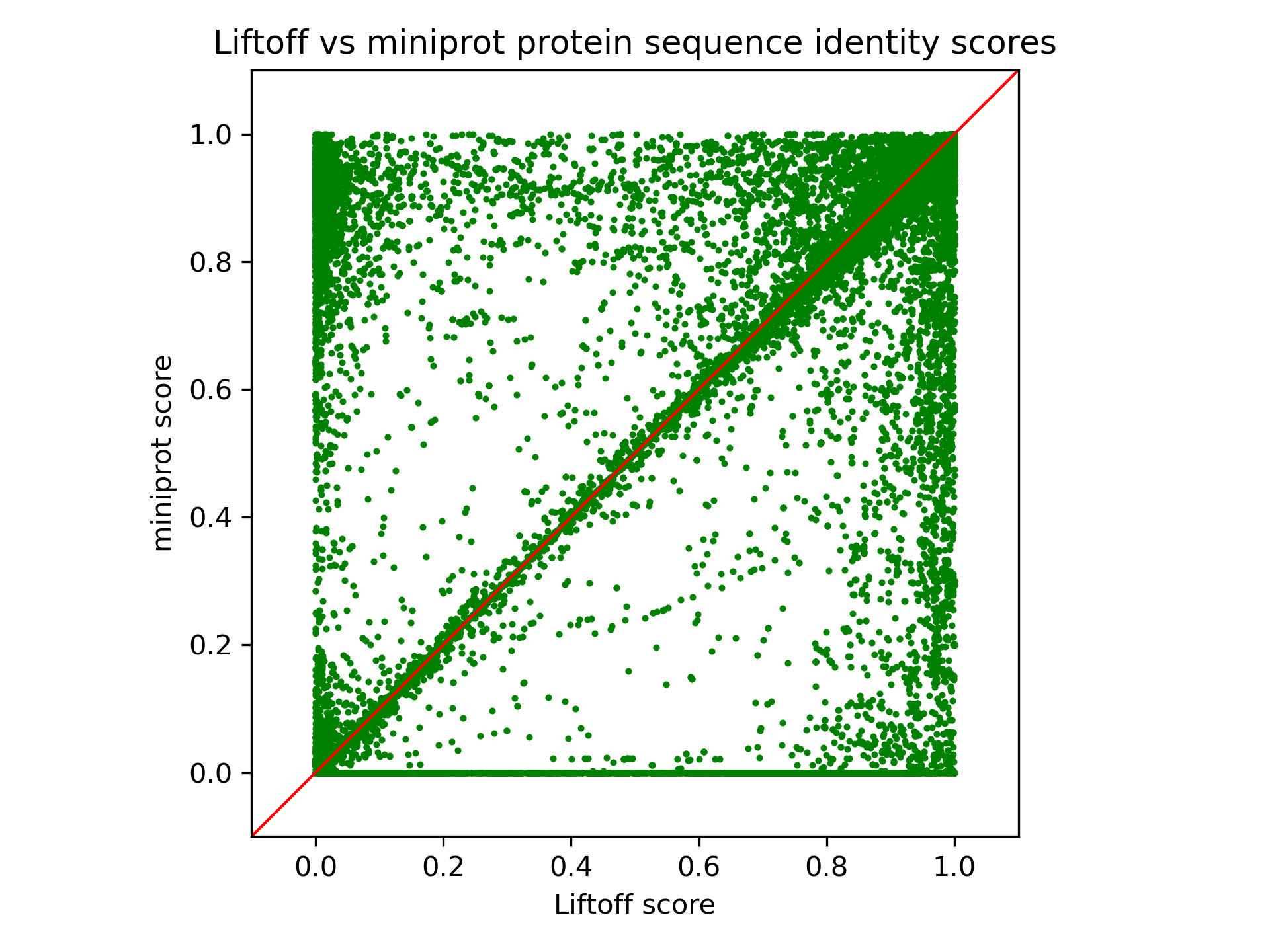
Figure 51 The scatter plot of protein sequence identity comparing between miniprot (y-axis) and Liftoff (x-axis). Each dot represents a protein-coding transcript.#
Next, we individually assess LiftOn in comparison to Liftoff and miniprot. In the comparison of LiftOn versus Liftoff (Figure 52, left), 28865 transcripts demonstrate higher protein sequence identity, with 327 achieving 100% identity. Similarly, in the LiftOn versus miniprot comparison (Figure 52, right), 34305 protein-coding transcripts exhibit superior matches, elevating 855 to identical status relative to the reference.

Figure 52 The scatter plot of protein sequence identity comparing between LiftOn (y-axis) and Liftoff (x-axis) (left) and comparing between LiftOn (y-axis) and miniprot (x-axis) (right).#
We visualize the transcripts in a 3-D plot, incorporating LiftOn, Liftoff, and miniprot scores (see Figure Figure 53) to provide a comprehensive comparison of the three tools. If a dot is above the \(x=y\) plane, it indicates that the protein-coding transcript annotation of LiftOn generates a longer valid protein sequence aligning to the full-length reference protein. The 3-D plot reveals that the majority of dots are above the \(x=y\) plane, suggesting that LiftOn annotation is better.
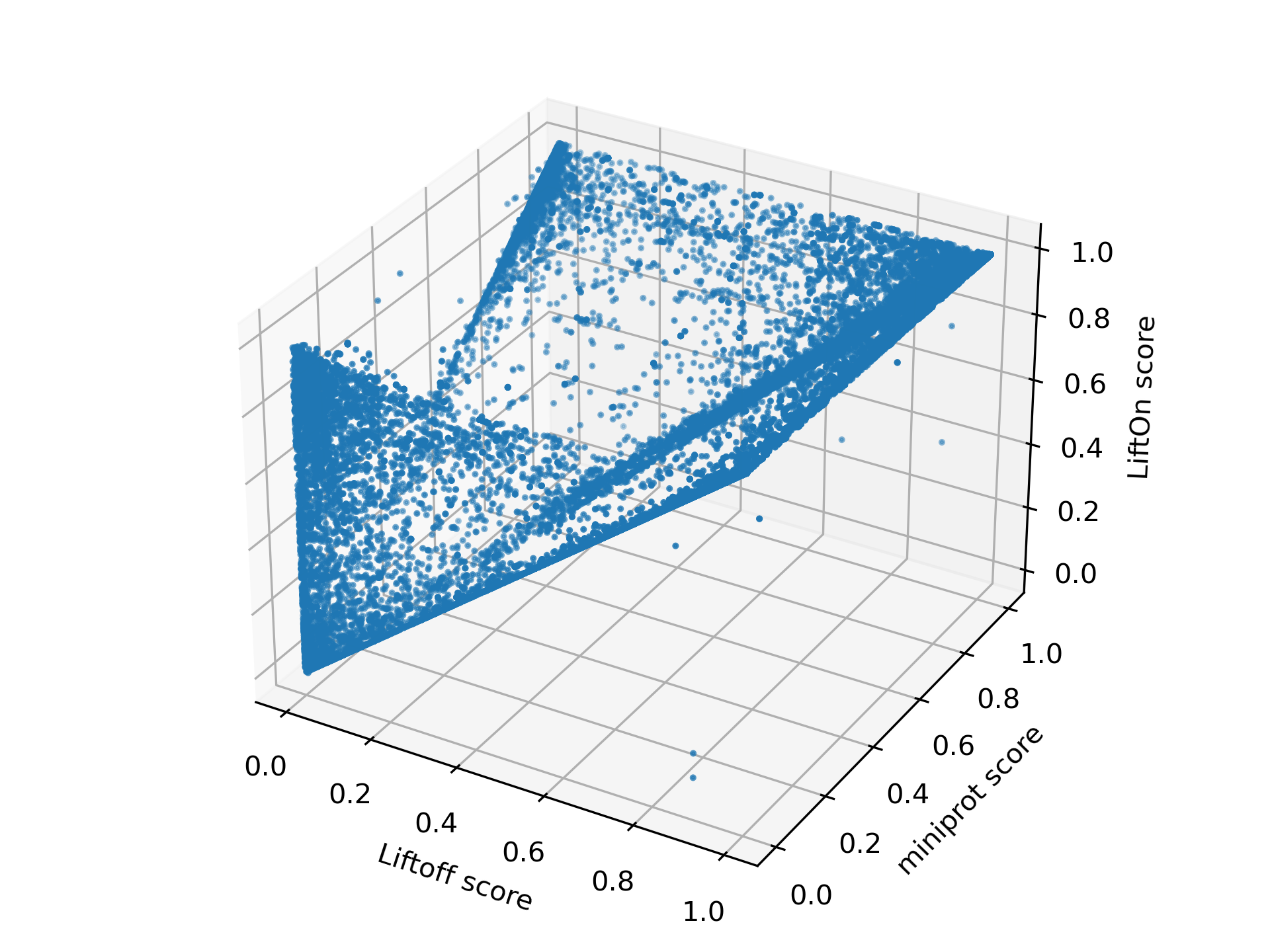
Figure 53 The 3-D scatter plot of protein sequence identity comparing between LiftOn (y-axis), Liftoff (x-axis), and miniprot (z-axis).#
Next, we check the distribution of protein sequence identities (see Figure 54). Among the three tools, LiftOn (middle) exhibits the smallest left tail, with 2635 protein-coding transcripts having a protein sequence identity of \(< 0.4\).

Figure 54 Frequency plots in logarithmic scale of protein sequence identity for Liftoff (left), LiftOn (middle), and miniprot (right) for the results of mouse_to_rat lift-over.#
Finding extra copies of lift-over features#
LiftOn also has a module to find extra copies by using intervaltree, Liftoff, and miniprot. The Circos plot in Figure 55 shows their relative positions between the two genomes. The plot illustrates that the extra copies were predominantly located on the same chromosomes in both GRCm39 and mRatBN7.2. The frequency plot of extra copy features are show in Figure 56.
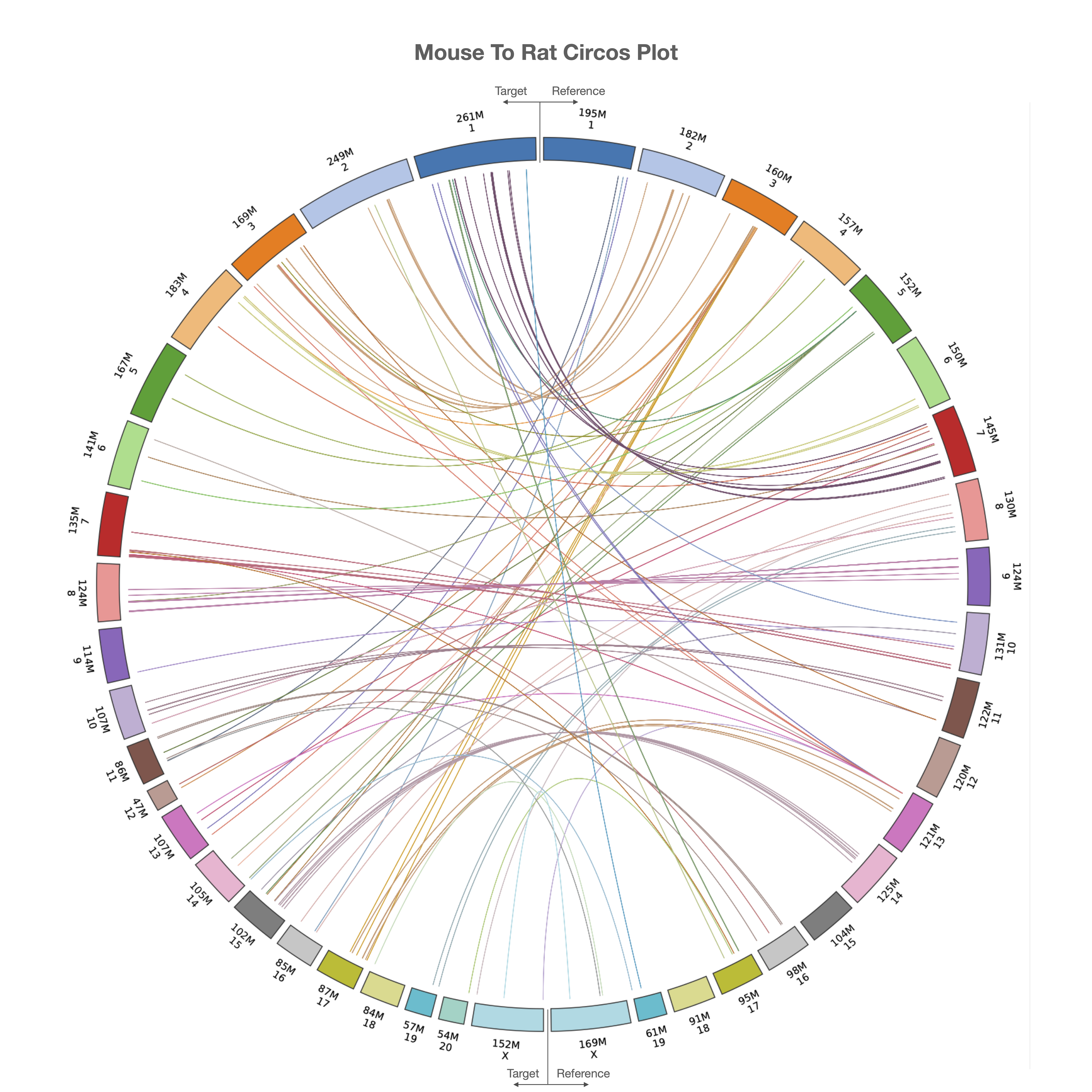
Figure 55 Circos plot illustrating the locations of extra gene copies found on mRatBN7.2 (left side) compared to GRCm39 (right side). Each line shows the location of an extra copy, and lines are color-coded by the chromosome of the original copy.#

Figure 56 Frequency plot for additional gene copy.#
Finally, we examined the order of protein-coding genes (Figure 57) between the two genomes and observed that, as expected, nearly all genes occur in the same order and orientation in both human genomes.
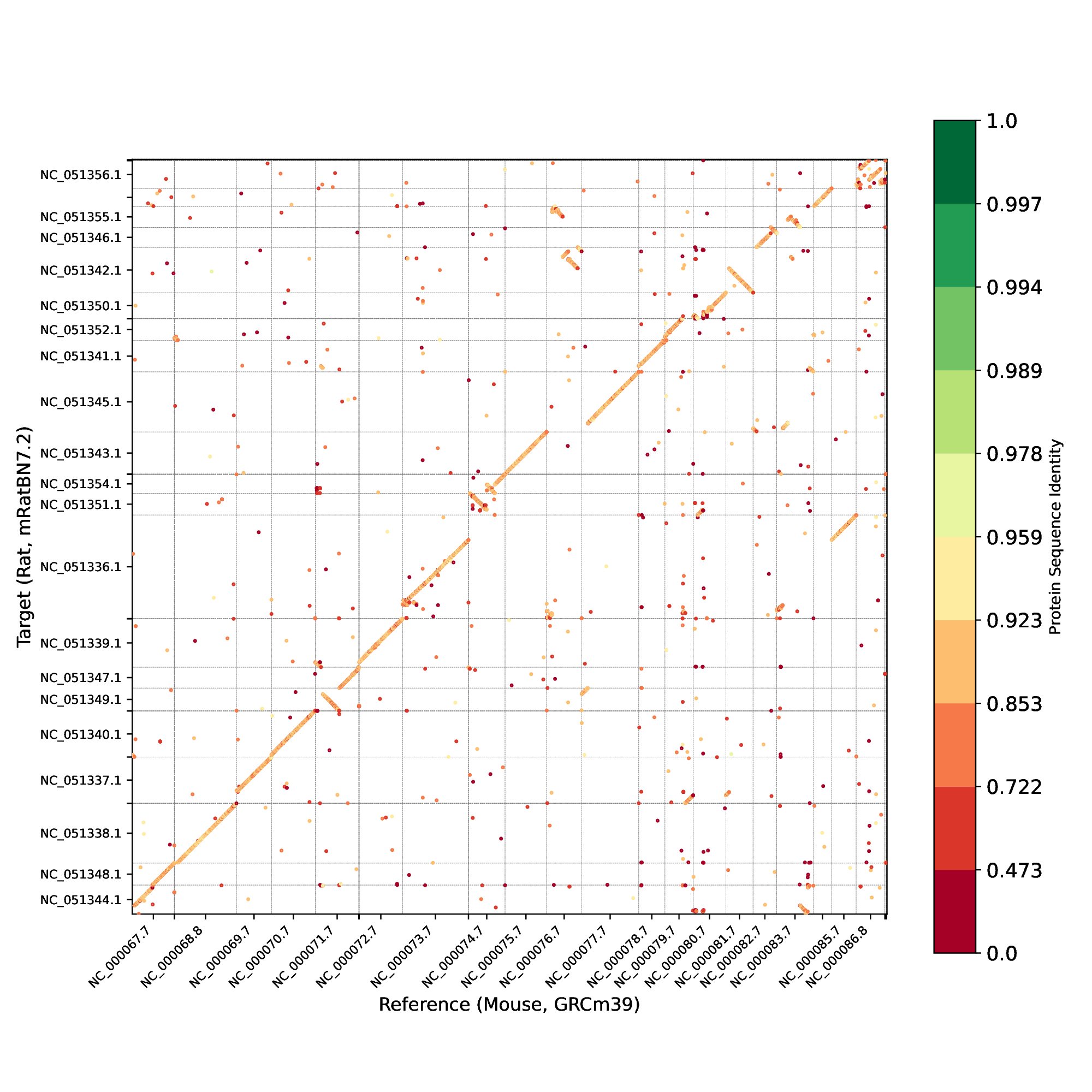
Figure 57 Protein-gene order plot, with the x-axis representing the reference genome (GRCm39) and the y-axis representing the target genome (mRatBN7.2). The protein sequence identities are color-coded on a logarithmic scale, ranging from green to red. Green represents a sequence identity score of 1, while red corresponds to a sequence identity score of 0.#
Examples of LiftOn's output#
To demonstrate LiftOn's improvement in comparison to Liftoff and miniprot visually, we extracted excerpts from IGV which contain the annotation tracks of all three methods, side by side (Figure 58).
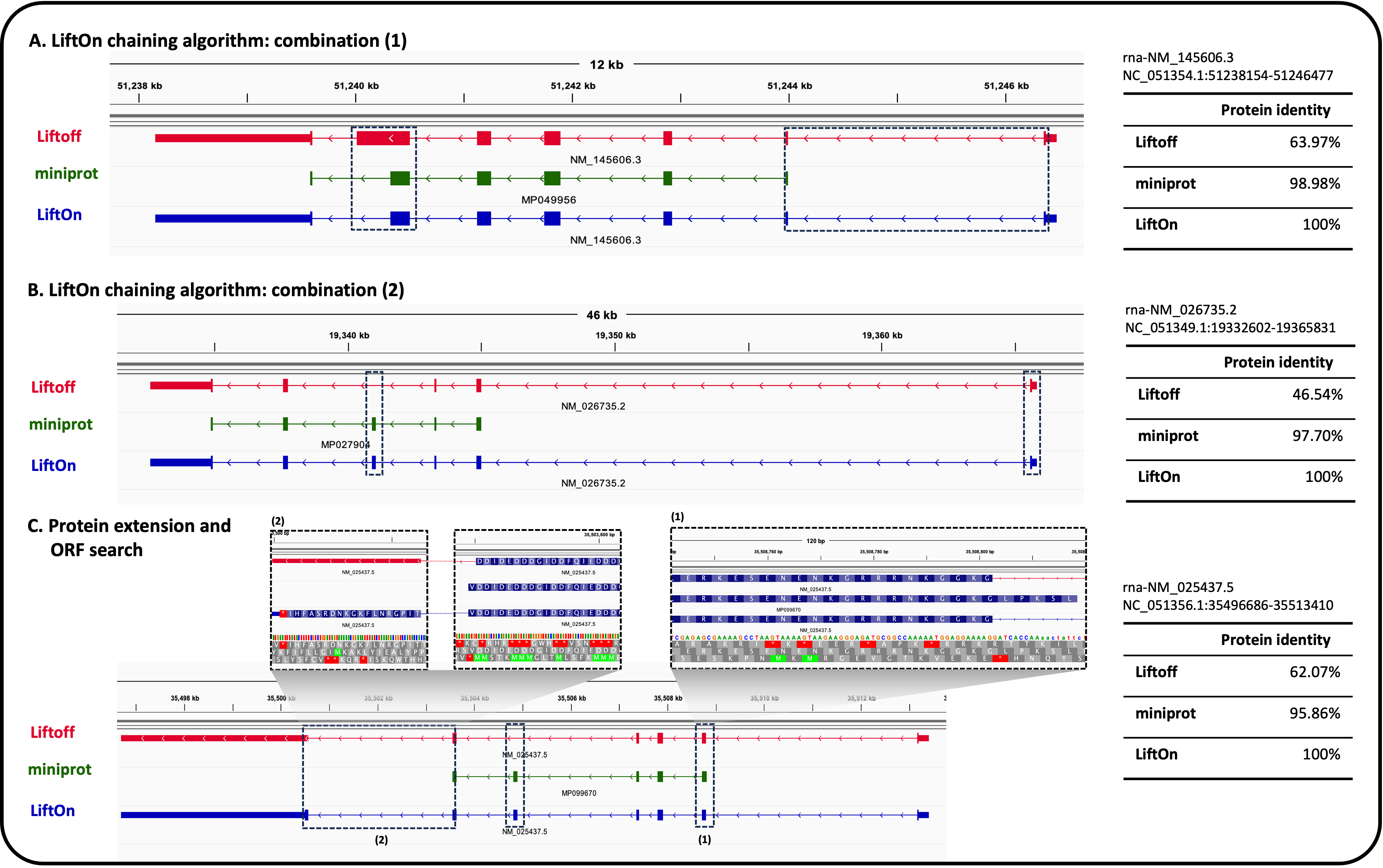
Figure 58 The above images, loaded from IGV, showcase examples of LiftOn yielding novel protein-coding transcripts which outperform Liftoff and miniprot’s readouts. (A) demonstrates LiftOn correctly locating the starting region of a short CDS which miniprot misses (producing subsequent error in the next CDS) but Liftoff catches, and a stop codon in a CDS which Liftoff misses but miniprot catches, yielding a consensus with 100% protein identity score. Similarly, (B) demonstrates LiftOn catching the short starting CDS which miniprot misses but Liftoff catches, and a missing CDS which Liftoff misses but miniport catches. Lastly, (C) again showcases LiftOn producing the best consensus between Liftoff and miniprot, while also highlighting a new feature in (2), where the algorithm extends the protein with an open reading frame search for a novel terminal CDS, yielding the complete protein sequence which both Liftoff and miniprot miss.#
What's next?#
Congratulations! You have finished this tutorial.
See also
Behind the scenes to understand how LiftOn is designed
FAQ ... to check out some common questions

